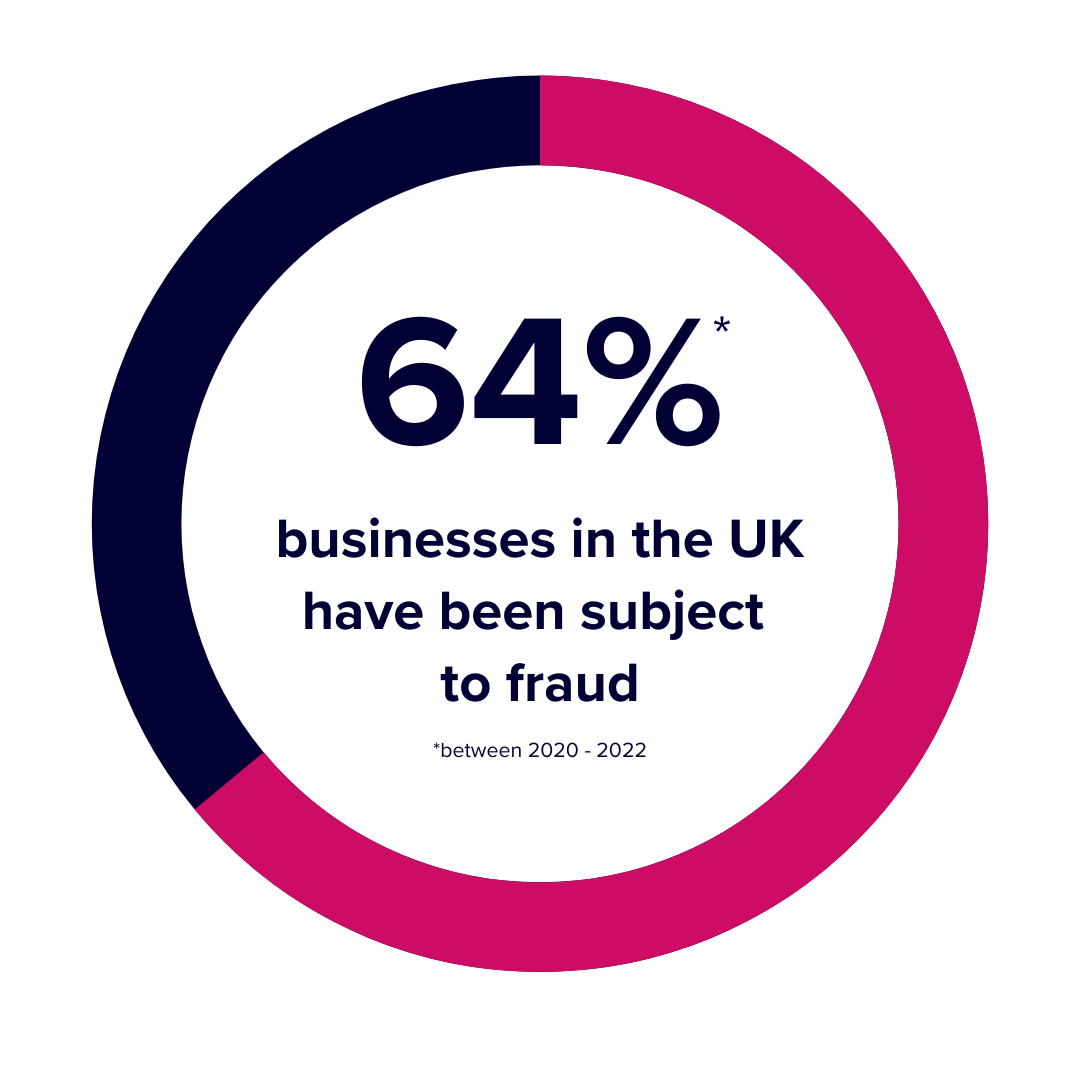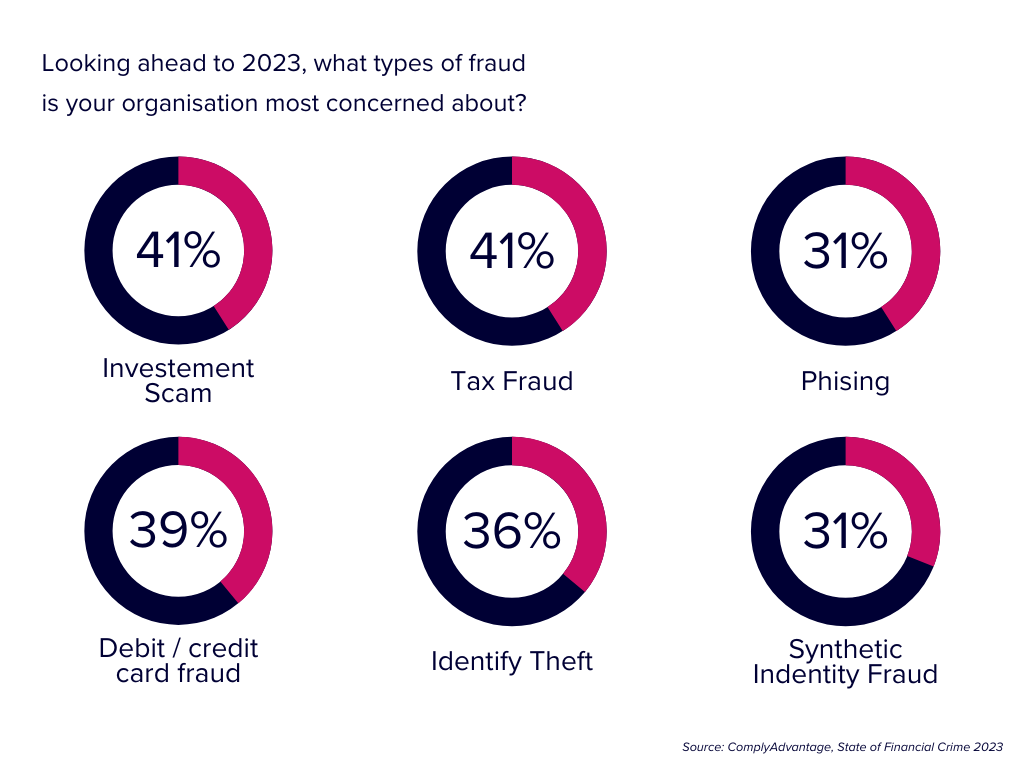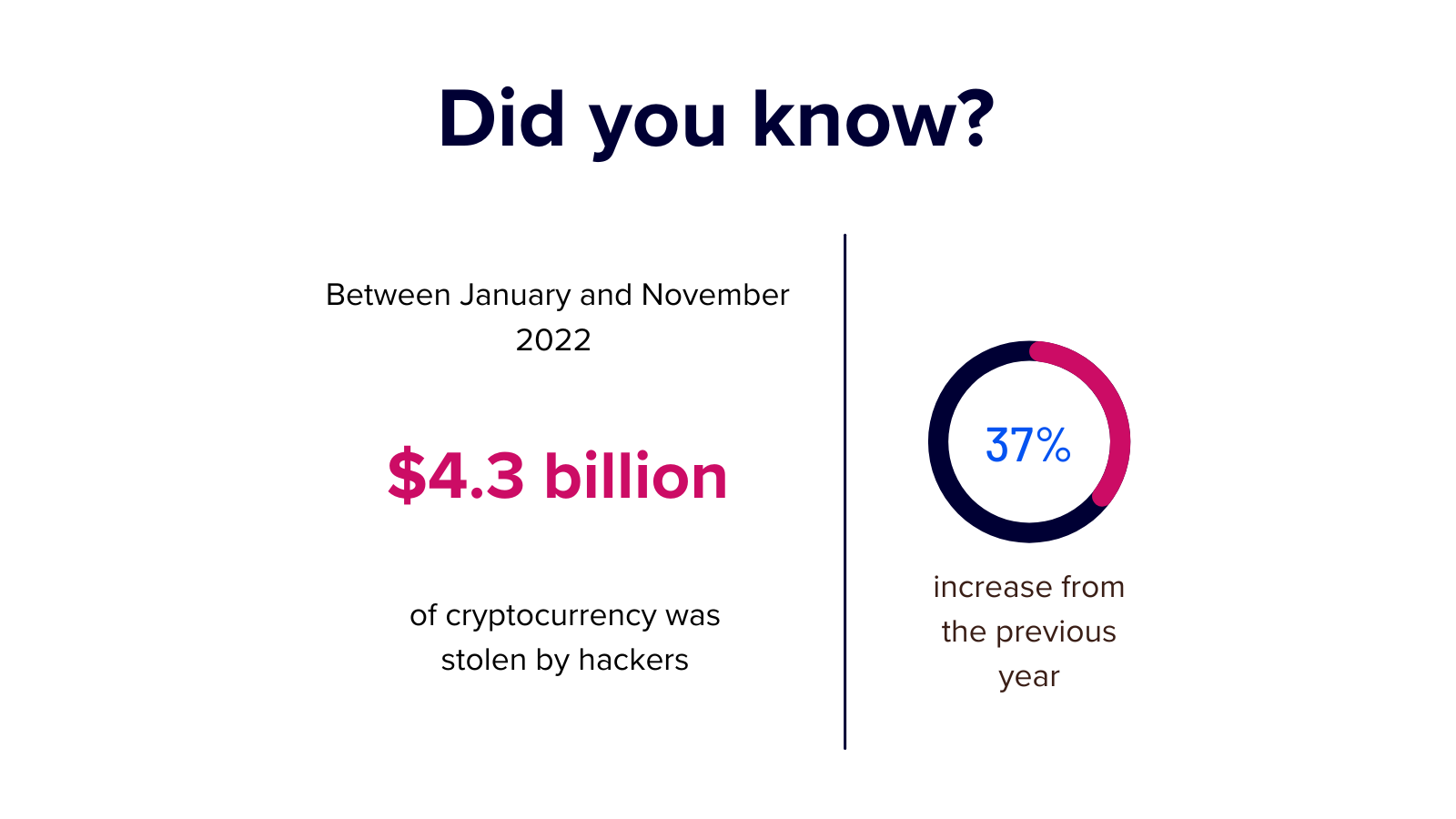
Send Us Your CV
Send us a copy of your CV and we'll see if you match any open opportunities we have.
Financial crime is a growing multi-billion pound issue, and it is essential to be aware of t...

Financial crime is a growing multi-billion pound issue, and it is essential to be aware of the latest trends to protect yourself and your organisation from financial and reputational damage. To give you an idea of what to expect from financial crime in 2023 and beyond, we’ve created this guide to discuss 5 of the biggest financial crime trends to watch in 2023.
In this guide, you will find out about the following:
The rise of real-time monitoring to detect financial crime
Cybercrime will play a factor in financial crime
AI and ML will help fight financial crime
The growing need for stricter financial crime regulations
Costing organisations £158 billion per year in the UK alone; one of the biggest financial crime trends you should know for 2023 is that fraud is on the up. Of course, fraud comes in various forms, from investment scams to tax and credit card fraud, three of the most common, according to 2023 data sourced by ComplyAdvantage.
Of these varying types of fraud, KPMG believes synthetic identify fraud is one of the most significant and fastest growing financial crime trends, with the potential to cost banks in the US $6 billion. With the rise in deepfakes created by artificial intelligence, something we’ll touch on later, it won’t be surprising if ID fraud does cause significant financial issues for people and businesses in 2023 and beyond.
According to the PWC, 64% of businesses in the UK have been subject to fraud or other financial crime between 2020 and 2022 - an increase on the 56% and 50% recorded in 2020 and 2018, respectively. More worryingly, this statistic is greater than the global rate of 46%, putting the UK second for the world’s highest for companies that have experienced fraud, only one position behind leaders South Africa.

With cracks in the economy more apparent than ever, with the cost of living crisis and rise in mortgage rates, the level of fraud and sophistication of fraudsters is undoubtedly not going to slow down in 2023. However, businesses appear to have an awareness that fraud is on the up, with the ComplyAdvantage revealing the following in their State of Financial Crime 2023 report:
Additionally, in 2022, financial crime compliance reached a global cost of $274 billion, according to LexisNexis, and increased on the more than $213 billion spent in 2020. These costs are expected to rise in 2023 as businesses look to invest more in combatting fraud and other forms of financial crime.

Clearly, the world is facing a significant challenge in combating the increase in fraud and other financial crimes. Our second item in our 5 of the biggest financial crime trends 2023 follows on from our first financial crime trend and stems around the rise of real-time monitoring to detect financial crime. Real-time payments through various devices, online browsers, and mobile apps have transcended how businesses operate, making instant purchases of anything and everything seamless.
With the global number of people using online banking expected to exceed 3.6 billion in 2024, and insight from Insider Intelligence estimating that $10 billion will be lost in the US by 2024 due to fraudulent transactions via mobiles and online purchases made on stolen cards, the need for real-time monitoring is essential and a significant financial industry trend for 2023.
Due to increased financial crime, real-time anti-financial crime (AFC), Know your customer (KYC) systems, and Anti-money laundering AML transaction monitoring technology are needed to screen fraudulent activities before they occur. The term real-time is important here, and it means that these solutions must detect and prevent potential threats before and at the latest as they begin to take place - essentially as they happen in real-time.
One significant challenge these real-time solutions pose is their ability to detect a genuine transaction and a legitimate fraudulent one. Financial institutions and regulators must adopt and optimise their defences in 2023 as the tactics of fraudsters become more refined and their ability to bypass screening through various screening messages with a recipient.
Real-time solutions' ability to detect fraudulent activity is strong, incredibly beneficial, and likely to keep getting more efficient. Still, as we continue to see a rise in real-time monitoring, financial institutions must find a balance by not flooding a business with alerts on potentially fraudulent activity and only contacting them if the threat is highly probable.
If the systems used by financial institutions send too many alerts for low-level threats could appear to be overprotective, and organisations may start to question if the signs are genuine and potentially block alerts from coming through, which could disturb their business activities and their customers and clients. Ultimately, this could lead to businesses parting ways with the financial institution for another provider.
Cybercrime is another trend that will play a factor in financial crime in 2023. There are various ways cybercriminals cause economic damage to organisations and individuals, from ransomware attacks, phishing, and stealing payment card data and information to multiple types of fraud, including ID fraud - mentioned as our first trend.
As businesses continue to rely on online services to pay and buy products and services, the risk of being vulnerable to cyberattacks only increases. To put these threats into perspective, data from Security Magazine revealed that a single cyberattack occurs every 39 seconds, resulting in over 2,000 daily attacks.
UK businesses alone lost an average of £4,200 due to cybercrime, with 39% of UK companies stating they had suffered an attack in 2022. Additionally, 60% of SMEs go bust within their first six months of operations at the hands of cyberattacks. Even more shocking is that the global cost of cybercrime reached $6 trillion in 2021 and is expected to top $10.5 trillion by 2025.
Other omnichannel commerce developments, the rise of the latest blockchain technology and iteration of the World Wide Web, Web3, along with the evolution of the Metaverse and crypto frauds, the latter of which we will touch on later, pose potential cybercrime threats that will play a factor in financial crime. Cybercriminals will look at ways to manipulate these digital mediums in 2023 at the expense of global brands.
We’ve mentioned how Artificial Intelligence (AI) and Machine Learning (ML) could be manipulated by fraudsters who use AI financial crime tactics in the form of deepfakes to commit identity fraud. However, AI can be used for good and will continue to help fight the war against AI financial crime.
For example, AI will be used to improve AML compliance by automating the process of identifying suspicious transactions. Machine Learning (ML) and AI algorithms will also be enhanced to analyse significant amounts of data in real-time, as we discussed earlier in the rise of real-time monitoring to detect financial crime.
ML and AI will continue to be used here to help identify fraud and indicate apparent money laundering activity transaction patterns as and when they happen whilst putting in processes to prevent them. AI and ML will help financial institutions comply with various AML and financial crime regulations and avoid money laundering and other forms of fraud from damaging their financial assets and overall reputation.
AI and ML will continue to help fight financial crime in 2023 by supporting businesses with risk assessments. Financial audits and risk assessments carried out by AI and ML will assess the risk of transactions for organisations and their clients and customers. These automated risk assessments will save businesses time and money, allowing their wider teams to focus on other mission-critical tasks that require manual work.
We discussed how cybercrime will play a factor in financial crime in 2023, and AI and ML can help combat this by supporting cybersecurity. AI and ML technologies can analyse an organisation's network traffic for malicious activity and help implement protection like firewalls to counter potential cyberattacks from causing financial harm to businesses.
To add to this, the global AI market surrounding cyber security is expected to grow at a Compound Annual Growth Rate (CAGR) of 19.43% between 2023 and 2032, expected to reach $102 billion by 2032, further emphasising the importance of AI and ML in the fight against AI financial crime.
The final entry in our 5 of the biggest financial crime trends 2023 you should know is the growing need for stricter financial crime regulations and sanctions. For example, the ongoing war between Russia and Ukraine has resulted in the US and the UK treasuries working more closely together to enhance the sanctions on Russian organisations, firms, and banks.
These sanctions involve a ban on exporting goods to other nations, making it more challenging for Russia’s central bank to access money and other assets. The European Commission paused some of Russia’s central banks from accessing Swift, a payment system used by 11,000 financial institutions in over 200 countries. This economic sanction ultimately delays payments for Russian oil and gas.
In 2022, the UK froze 60% of Russian President Vladamir Putin’s ‘war chest,’ cutting off $350 billion (£275 billion) of Russia’s $604 billion foreign currency reserves.
Moving away from the Russia-Ukraine conflict and onto another aspect of financial crime that will see stricter regulation and sanctions put in place - that being crypto regulation.
Between the nine months of January and November 2022, $4.3 billion of cryptocurrency was stolen by hackers, a 37% increase from the previous year. Global regulations are being implemented to help prevent future financial crimes in the crypto space. In April 2023, the EU Parliament approved the EU Markets in Crypto Assets (MiCA) bill to provide legal certainty for crypto assets. The law will become official in 2024.
Similarly, in the US, the first version Lummis-Gillibrand bill, legislation to regulate digital assets like cryptocurrency, was presented in 2022 due to the crypto market crash that contributed to the bankruptcy of many high-profile organisations, including cryptocurrency exchange and crypto hedge fund FTX, and saw crypto tokens plummet.
Fast-forward to July 2023, and a second version of the bill was presented with US Senator Cynthia Lummis and US lawyer and politician Kirsten Gillibrand announcing they are “reintroducing landmark legislation to create a federal regulatory framework that allows crypto businesses and investors to prosper here in America while protecting consumers from bad actors.”
Finally, as real estate prices remain at an all-time high, this is an attractive tool for money launderers. Stricter sanctions and regulations of Anit Money Laundering (AML) compliances will need to happen in 2023 to prevent corrupt transactions from occurring.
To put this into perspective, the Global Financial Integrity (GFI) reported that over $2.3 billion was laundered through US real estate, with Transparency International also finding that a minimum of $4.4 billion of UK real estate investment came from Politically Exposed Persons (PEP). These statistics provide further evidence of the growing need for stricter regulation and sanctions to counter financial crime in 2023.

Now you know 5 of the biggest financial crime trends in 2023, from fraud is on the up, the rise of real-time monitoring and cybercrime to AI and ML fighting the war against financial crime and the growing need for stricter regulation and sanctions, it’s clear the financial sector will continue to face threats in 2023. Still, it’s also apparent that solutions are being developed and implemented to keep the space from long-term harm.
Some of these financial crime trends don’t have to be all doom and gloom for your business. Read our 5 Ways to Improve Your Financial Compliance Strategy blog to discover solutions to protecting your brand with financial crime prevention.
If you are a company within the financial services sector looking for industry specialists to help you source the best talent to keep you clear from financial crime in 2023 and beyond, we can help. Our consultants have deep financial market expertise and an extensive global talent network ready to help you grow and futureproof your business.
Alternatively, if you’re a job seeker looking to take the next step in your career with the latest financial crime compliance jobs, our team are here to connect you with the top opportunities on the market.
So, whether you are a business or a candidate, find out how we are committed to your success by getting in touch with a member of our team today.